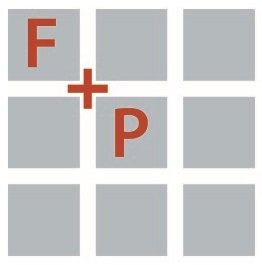Four Tenets of Engagement: Collaborating with Developers and Communities to Make Great Places
/By John Rufo
At Form + Place we recently went through a brainstorming exercise as part of our brand evolution to confirm for ourselves why we work, how we work and how this should serve our clients and the communities we design in. As a result, we identified four tenets of engagement that we believe each design effort should embrace as part of the process. We refer to them as 1) Collaborative Visioning 2) Community Building 3) Integrated Form-making and 4) Experiential Place-making.
In a daily way we approach the complexities of design by staying true to the belief that great places are made through a collaborative process that builds community connections, integrates multiple points of view and results in authentic experiences of place. The “complexities of design” can include almost anything from challenging site constraints to detailing sophisticated façade systems to negotiating a public vetting process to fitting a design within a tight budget without losing the impactful details of the project.
Our work is primarily driven by the development world as we design mixed-use commercial projects in contexts that range from urban to rural and everything in between. Regardless of the physical context and project program, we believe the four main tenets of engagement are critical to the project’s ability to situate itself in the community and take part in the ongoing conversation of civic development. More than that, we believe the developers and communities that are our clients will always benefit from embracing these tenets and integrating them into the development and entitlement process in any community.
Collaborative Visioning
Whether form-making or place-making, good design stems from listening to our client’s goals and collaborating with them to articulate a vision. People expect architects to design, developers to develop and builders to build, but community stakeholders don’t always expect the development team to listen deeply to their goals and concerns. As we enter the community review process the same deep listening and creative visioning applies. Whether executing a complex mixed-use building on a key urban infill site or re-imagining the future of an 80-acre rural campus, working directly with all stakeholders to catalyze an engaging design is important for successful project fruition.
Community Building
At Form + Place we thrive on what we call “the seam” between the private development world and communities that are continually seeking to reshape their vision for the future. Whether contemplating a new master plan for a Center Business District or helping to frame design guidelines for a large-scale mixed-use development, an approach to community building should emphasize creatively engaging all voices in an effort to find the optimal balance between certainty and flexibility. Stitching “the seam” together to achieve a shared vision can be a long process but it will ultimately build community trust and engagement as the project is realized.
On both sides of the seam, certainty that the entitlement process will yield the desired results, and flexibility for the project to evolve with changing economic trends are critical to a process that builds community trust. The more the development team and community stakeholders are engaged in open dialogue about the realities of development and its impact, the more likely it is for a project to fit into its context. Once the project is executed it furthers the community building process through its programming and design, providing venues for retailing, working, living and hosting daily civic life.
Integrated Form-Making
Whether in the adaptive reuse of an existing structure or ground-up development, designing and constructing a building is a complex undertaking that requires an integrated approach from initial vision to final execution. Once the design direction is established, owner, architect and builder all have roles to play in continuing to shape the project. In any context a new or renovated project should look to its immediate surroundings for initial programming and design cues. All aspects of building design, from conceptual site design to architectural detailing to the integration of complex building systems should synthesize to reinforce a building’s form and help it become an integral part of its neighborhood.
Experiential Place-making
When done well, place-making can define the essence of a community, integrating its historical context and cultural identity to reinforce its current identity and future aspirations. Great places often facilitate a wide range of social activities including gathering, contemplation and recreation. Thoughtfully designed places are integrally defined by the buildings that frame them and draw on influences from the natural environment, but it is the experiential piece of the equation, including purposeful programming, that brings them to life.
Engagement in public civic life means something different to everyone. For one person it might be regularly attending community planning or zoning meetings, for another it might mean making sure to get out for a walk, check in on a neighbor or attend a public concert. The places that we occupy as participants in public life have equal variety; some are intimate and quiet, some expansive, some are centered in the community while some might be out at the edges. Understanding the many levels that people engage in public life is the first step in creating the potential for experiences that fulfill the role of our public spaces as places that meet the needs of people in the communities where they work, live and play.





